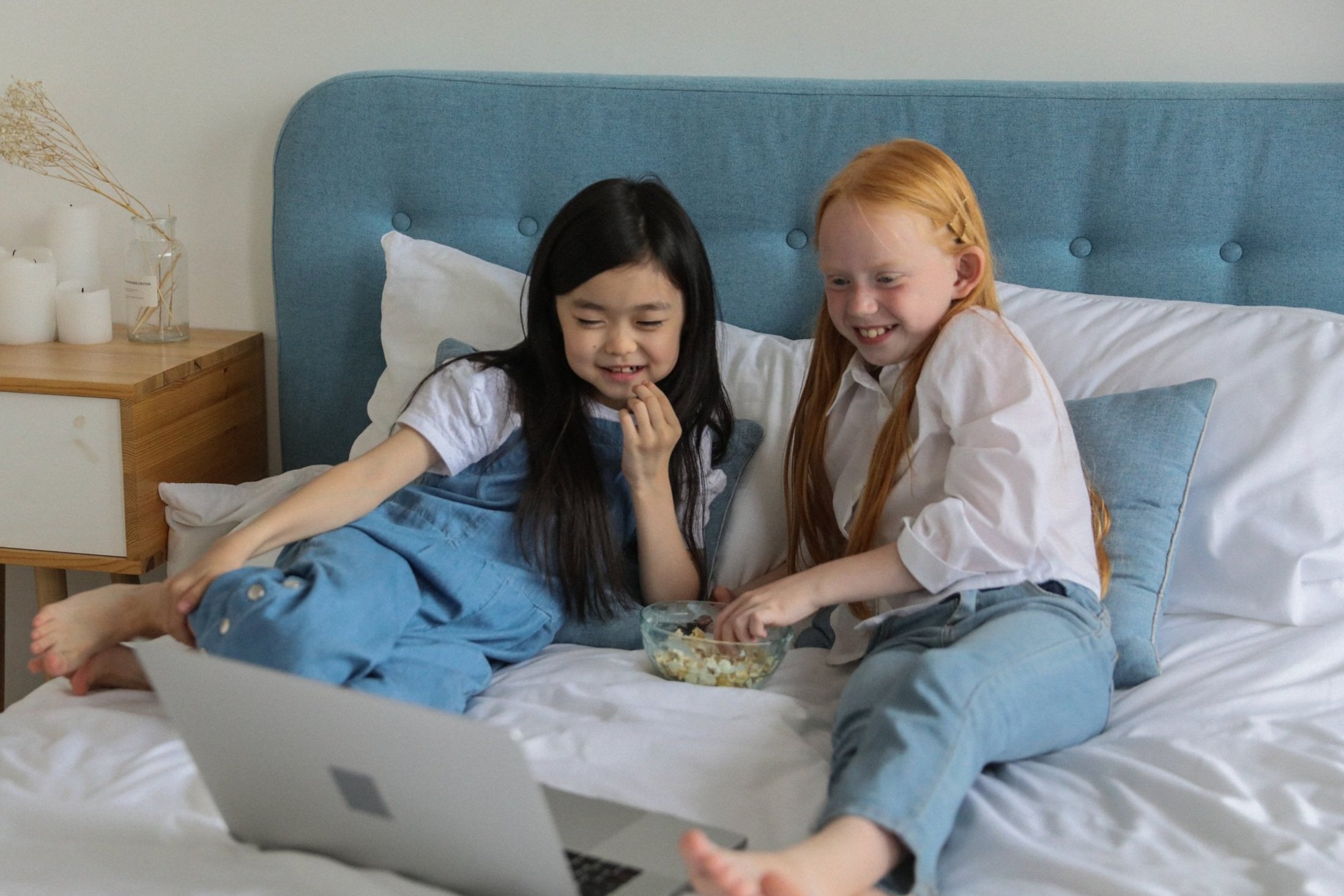
Case Study
Kids Media Co.
Helping a leading Kids Media company better understand their growing audience.
User Research; Client Management; Design Leadership
Project Overview
Bain’s client, a children’s media company focused on curating age-appropriate content for the youngest audiences, was looking to expand their digital streaming platform.
While the client already held a stellar reputation with parents and families, they asked Bain to help them understand how kids aged 5 to 10 and their parents select and consume media, so they could better tailor their offerings to those particular users’ needs.
Project Timeline: 3 weeks
Team: Design Manager (me); Senior Designer; alongside Bain consulting team
Planning the Research
This research consisted of two methodologies:
Remote, moderated interviews (n=10), conducted by myself and the Senior Designer
Remote diary study (n=20), programmed and lightly moderated by an outside firm, using Recollective
Through combining these two methods, we hoped to capture a full picture of both how children interact with media, and why they choose their favorite media and platforms.
When planning the research, we took special care to write our interview guide/script in friendly, approachable and informal language when speaking directly with the children themselves. (More information and learnings on conducting interviews with children in next section.)
Complications
Legal Complexities
For this research, we wanted to talk directly with children aged 5-10 to understand their viewing habits. For legal reasons, however, we were prohibited from speaking to children individually and from recording children during the interview.
To address this, we required a parent be present for the interview, and did not record the interview until the child’s portion was finished.
This presented some challenges both with the children feeling comfortable describing their viewing habits honestly with a parent present, as well as with capturing as much information as possible without recordings to reference after the fact.
While the former was unavoidable, we addressed the latter by having 1-2 note takers in each 1:1 session. (Children being as they are, though, we felt we still got a lot of honesty from them!)
Interviewing Kids
AKA “How to listen so kids will talk…”
What we learned:
Asking about their interests / hobbies early in the conversation is a great way to get them to open up
Talking to kids like they’re humans (i.e. not baby talk or speaking down to them) makes them feel comfortable and want to connect with you more
It helps to have someone who is familiar with popular kids’ shows and interests, especially for younger kids who talk fast/pronounce things differently!
You can really impress outdoorsy kids if you tell them you used to carve things
What We Heard
Age-appropriateness is not “one-size-fits-all”
Parents see their kids as individuals and prioritize their unique needs when deciding what content is appropriate
Families value and prioritize child autonomy and exploration
Parents want to empower their children to follow their curiosity and learn about the world for themselves
Families favor open communication over rigid parental controls
Parents rely on trust and open dialogue to address inappropriate content and topics with their children
Media selection criteria evolves with age
Younger kids prioritize familiarity or attractive visuals; older kids select on mood, interests, and peer influence
Insight Deep Dives
For each of the four insight themes described, the junior designer and I compiled a “Deep Dive” slide explaining the theme further, laying out potential implications of the insight and providing quotes from interviewees.
Click to enlarge.
Opportunity Space Identification
Additionally, we helped the client better understand the unique needs of this age range through a quick competitive analysis, which highlighted an opportunity space for Kids Media Co. to address unmet needs.
Click to enlarge.
Key Takeaways
And finally, the junior designer and I summarized our three key takeaways for the client: three conditions that kids and parents told us would be key to winning this age group.
Redefine “safety”
Parents know their kids better than anyone else, and only they can decide what’s safe or unsafe for their family. In today’s world of decentralized, on-demand media consumption, “safe” means giving parents the necessary tools and support to customize and personalize the media ecosystem their kids engage with.
Give kids space to explore, learn and develop trust
Parents want to empower their kids to explore and grow independently, ultimately building the foundation for trust that translates into the teenage years and beyond. In the current media landscape, no platform gives parents the confidence they need to let their kids run free.
Attract users through content, win with experience design
Breadth and depth of content are table stakes for attracting customers, but how users engage with the available content, and the customizations available to design a personalized, curated media consumption experience for their family, will ultimately drive “stickiness” and long-term success.
Results
Our insights and recommendations were presented to multiple executives within Kids Media Co. over several sessions. I was able to present the initial share-out of our findings to our key stakeholders, which was met with enthusiasm and gratitude for the depth of insight we provided.
To my knowledge, the findings are now helping to guide the next iteration of Kids Media Co.’s streaming platform.
Once our involvement in the project had concluded, we were also praised and thanked profusely by our internal Bain leadership team, with one Partner commenting that she couldn’t wait to get our skills on other cases in her docket.


